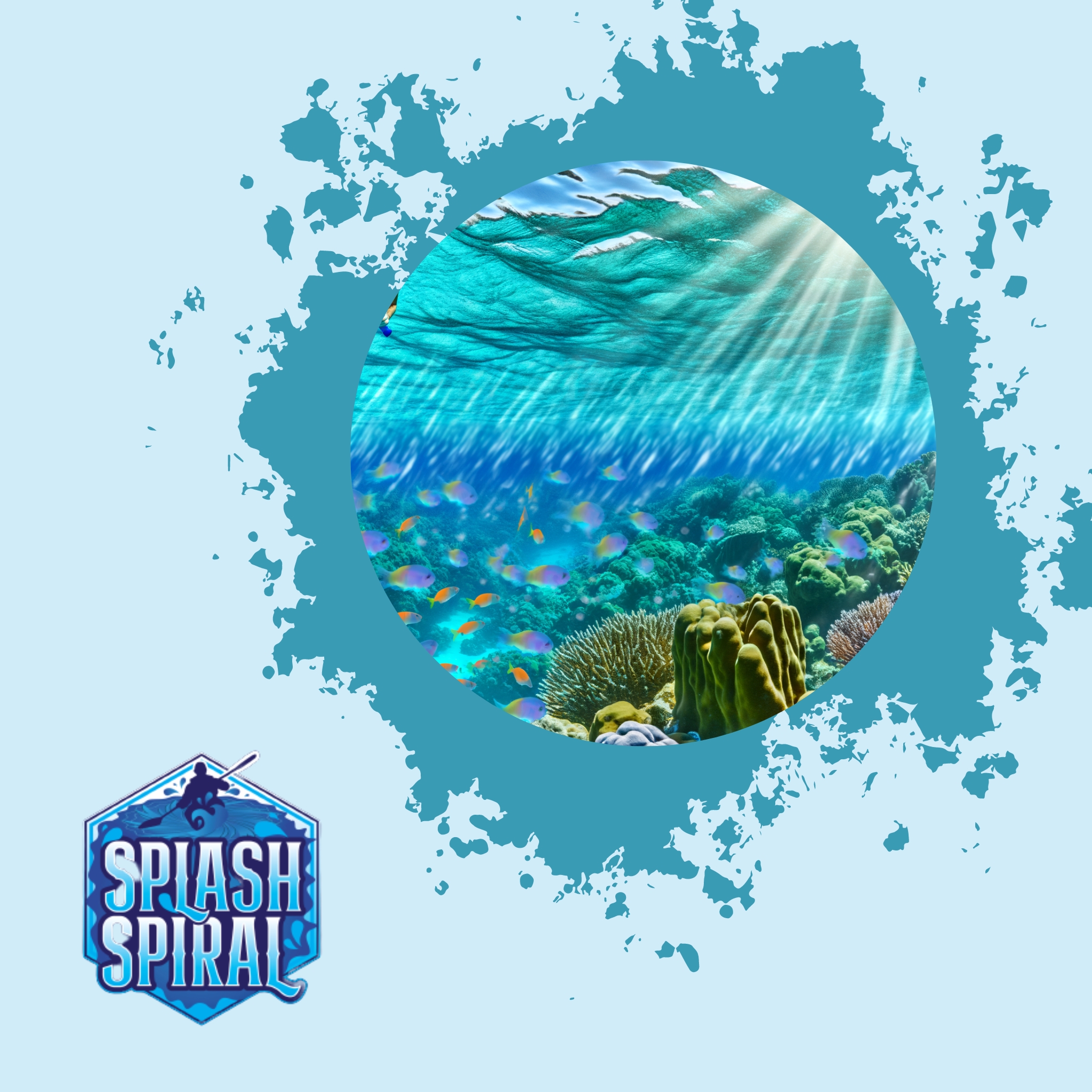
So, you're getting into snorkeling? That's awesome. With some basic snorkel gear maintenance, you can keep your gear in top condition for your next underwater adventure. Whether you’re exploring tropical waters or just hitting your local beach, taking a little time to care for your equipment can make a big difference in how you experience the ocean.
In this outline, we'll break down practical maintenance tips for your snorkeling gear. Let's keep it straightforward and make sure you're set up for pristine underwater excursions.
Introduction to Snorkel Gear Maintenance
Alright, so you’ve got your snorkel gear and you're pumped to dive into the blue. Before you hit the water, let’s chat a bit about maintenance. Regular snorkel gear maintenance is as crucial as your mask itself because it keeps your stuff in check and ready for action. If you’re someone who prefers gear that works just as it did on day one, then maintenance is your new best friend.
Think of taking care of your gear as a way to make it last longer and perform better. Saltwater and sun might be great to swim in, but they’re not exactly friends to your equipment. Without proper care, gear can wear out prematurely, fog up easily, or just not work right when you need it the most. Taking a few simple steps after each use means you avoid those last-minute headaches before your next snorkel session. Plus, trust me, it feels way better swimming knowing your gear won't let you down.
Essential Components of Snorkeling Gear
Keeping your gear in tip-top shape starts with understanding the essentials. Let's break it down to the basics you'll need to focus on: your mask, snorkel tube, and fins.
-
Mask Cleaning and Care:
Cleaning your mask is crucial for a clear view underwater, and nobody likes foggy lenses. Get into the habit of giving your mask a rinse with fresh water after each dive. To really go the extra mile, use a gentle non-abrasive cleaner or some baby shampoo. Rub a tiny amount inside the lens, rinse well, and you're set. Skip the harsh chemicals—they can damage the mask and irritate your skin. -
Snorkel Tube Maintenance:
Keeping your snorkel tube clean is key to preventing mold or mildew buildup. Once you’re out of the water, rinse it thoroughly with fresh water. Give it a good shake to ensure all moisture is expelled. If you've skipped a few cleaning sessions, a mix of water and mild dish soap can do wonders. Let it soak briefly, then rinse thoroughly. Pay attention to any lingering odors—they might be a sign you need to clean it more frequently. -
Fin Maintenance and Care:
Fins are your power tool underwater, and they're not hard to keep in shape. Just rinse them in fresh water after each use to get rid of salt, sand, or debris. No fancy cleaning required. Avoid leaving them in direct sunlight for extended periods, as prolonged exposure to UV rays can weaken the material. When storing them, lay them flat to prevent bending, which can affect your finning technique later on.
Consistent maintenance can save you from gear-related headaches down the line and enhance your snorkeling experience. Treat your gear with care, and it'll take care of you, ensuring every underwater adventure is as enjoyable as the last.
Best Practices for General Equipment Care
Alright, let’s get down to the nuts and bolts of general snorkel gear care. First off, it’s essential to rinse all your gear with fresh water after every snorkeling session. Salt and sand are like the unwanted guests that crash the party and then refuse to leave. If you let them hang around, they can cause considerable wear and tear over time. A simple rinse with fresh water will wash away those pesky residues and help keep your gear in tip-top shape.
Next, drying your gear is crucial. But don’t just toss it in a heap and call it a day. Use a towel to pat down your equipment, and let it air dry in a shaded spot. Direct sunlight might dry things quicker, but it can also degrade the materials, reducing their longevity. You want your gear to last, right? So, be patient and let it dry naturally.
As for storing your snorkeling gear, stash it in a cool, dry place. Avoid cramming your mask or fins into tight spots since mishandling can mess with their shape and function. Ideally, hang up your gear or lay it flat, but don’t stack items on top of one another. This small effort in proper storage ensures your gear stays in good working order and will be ready for your next ocean escapade. With these basic care principles, you’ll be cruising underwater like a pro in no time.
Addressing Common Snorkeling Gear Issues
So, you've got the gear, but it's not all smooth sailing. Sometimes, your equipment may throw you a curveball, and that's okay. Let's break down some common snorkeling gear issues and the simple fixes you can handle like a pro.
Fogging Masks:
Nothing spoils a snorkeling trip faster than a foggy mask. A clear view is everything when you're underwater. To prevent fogging, try using a defogging spray or a DIY solution like baby shampoo. Just apply a tiny drop, spread it around, and rinse briefly—you’re good to go. If you're caught without these, a good ol' fashioned spit-n'-rinse can still work in a pinch. Remember, never use your towel or fingers to wipe the inside of your mask, as it won't clear the fog and might make things worse.
Leaky Snorkels:
A leaky snorkel? That's like a leaking pen in your pocket—unwanted and messy. The usual culprits are the purge valve or a cracked mouthpiece. Give your gear a once-over before you hit the water. Check for tiny cracks or loose connections and, if necessary, tighten them up. If you spot damage, replacement is key; no Band-Aid fixes here. A snug fit is crucial, so make sure your snorkel attaches securely to your mask strap for seamless snorkeling.
Damaged Fins:
Fins help you glide like a fish, but if they're damaged, you might end up paddling like a duck. Regularly check your fins for cracks or splits, especially near the heel and blade edges. If you notice minor wear, a repair kit with some fin adhesive works wonders for quick fixes. However, if damage seems beyond repair, it's time to shop around for replacements. Properly maintained fins can give you smooth and efficient movement, so they’re worth the upkeep.
By staying on top of these issues, your snorkeling excursions will be as smooth and enjoyable as the waves you explore. Keep diving into those waters with confidence, knowing you've got your gear—and any hiccups—under control.
Specialized Gear Care for Tropical Waters
Snorkeling in tropical waters is a dream for many, with vibrant coral reefs and a rainbow of marine life. However, these inviting conditions can take a unique toll on your snorkeling gear. Here are some straightforward tips to ensure your equipment is ready for warm, saltwater environments.
Effects of Tropical Conditions on Gear
Tropical waters are warm and salty, a combination that can lead to rapid wear if you don’t pay attention to your gear. Higher temperatures and constant exposure to salt can weaken the materials, making regular maintenance essential for preserving your gear's performance and longevity.
Maintenance Tips for Tropical Adventures
Salt and Sun Rinsing
- After each dive, rinse your gear with fresh water thoroughly.
- This step removes salt crystals that can corrode and weaken your gear if left unchecked.
- The sunnier the spot, the more diligent you should be, as UV exposure accelerates salt damage.
Dry in the Shade
- Sunlight degrades and fades the colors of your snorkel and mask over time.
- Always dry your gear in the shade to minimize UV damage and prolong the life of your equipment.
Heat Check
- Be cautious of heat if your gear sits out on a boat deck or sandy beach.
- Intense heat can warp plastic parts, so keep your gear in a cool, shaded spot when not in use.
Regular Lubrication
- Check adjustable buckles and straps regularly for stiffness.
- Apply silicone spray once a month to keep these parts moving smoothly and prevent cracking.
By following these simple maintenance steps, your snorkeling gear will stay in great shape while you enjoy the wonders of tropical waters. Regular care ensures every snorkel session is as enjoyable as the last, without any unexpected issues.
Pre-Trip and Post-Trip Gear Checks
Before you hit the water, it's crucial to give your snorkel gear a once-over. A pre-snorkel equipment check can save you from annoying surprises when you're already in the ocean. Start by inspecting your mask for any scratches or cracks, and ensure the strap is secure. Test fit it on your face to make sure it still creates a good seal. Next, look at your snorkel tube—check for any blockages and ensure the valves, if any, are functioning correctly. Finally, flex your fins and examine them for cracks or damage that could affect their performance.
After your snorkeling adventure, it's time for a post-snorkel cleaning routine. Rinse all your gear with fresh water to wash off salt, sand, and grime. Pay attention to the crevices and joints, especially on your mask and fins. Once rinsed, let everything air dry completely in a shaded area. Make sure not to leave your gear under direct sunlight as it can damage the material over time. Proper drying prevents the growth of mold and keeps your equipment ready for the next dip.
By incorporating these simple pre-trip and post-trip checks, you'll extend the life of your snorkeling gear and ensure every outing is smooth sailing.
Continuous Learning and Resources
Maintaining and improving your snorkel gear care routine is a journey, not a destination. To make sure you're always on top of your game, it's essential to keep learning and seeking out new tips and techniques. Start by tapping into online resources that can sharpen your skills and deepen your understanding of snorkeling.
Consider diving into the topic of underwater visibility, which has a direct impact on your snorkeling experience. Articles like "Best Underwater Visibility" offer insights on where and when to snorkel for the clearest views, helping you plan unforgettable trips.
If you're dreaming of exploring the Hawaiian islands, check out "Hawaii Snorkeling Packages", which can guide you through all-inclusive snorkeling adventures. These resources not only help you become better prepared but also enrich your overall snorkeling experience.
For those eager to dive deeper into the world of snorkeling, the "Splash Spiral Diving" platform is a treasure trove of information and community insights. Continuously engaging with resources like these ensures you're always ready for your next underwater escapade, learning from seasoned snorkelers and enthusiasts alike.
By committing to ongoing learning, you'll not only keep your gear in top shape but also enhance your snorkeling experiences, turning each outing into an opportunity for discovery. Whether through articles, community forums, or expert guides, the knowledge is out there—just waiting for you to dive in.
Conclusion
In the world of snorkeling, taking care of your gear is as important as diving into the water itself. By focusing on the simple yet essential practices we've discussed, you're setting yourself up for countless memorable underwater adventures. Whether you make a habit of rinsing your gear in fresh water after each use or ensure your mask is fog-free before you set out, these efforts will keep your gear in great shape and enhance your overall experience.
So go ahead, embrace these snorkel gear maintenance tips. They're your ticket to smooth, worry-free trips to the ocean, where all you have to focus on is the stunning marine life around you. A little care goes a long way, and by incorporating these practices into your routine, you'll enjoy snorkeling all the more. Happy adventures, and see you under the sea!







